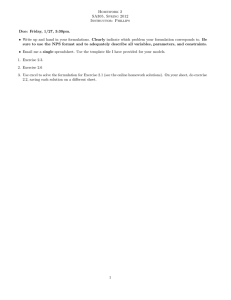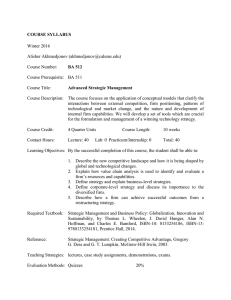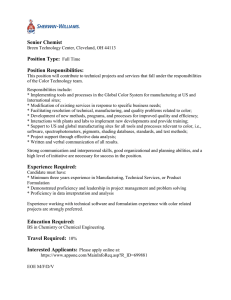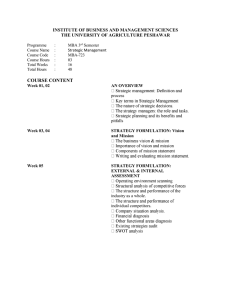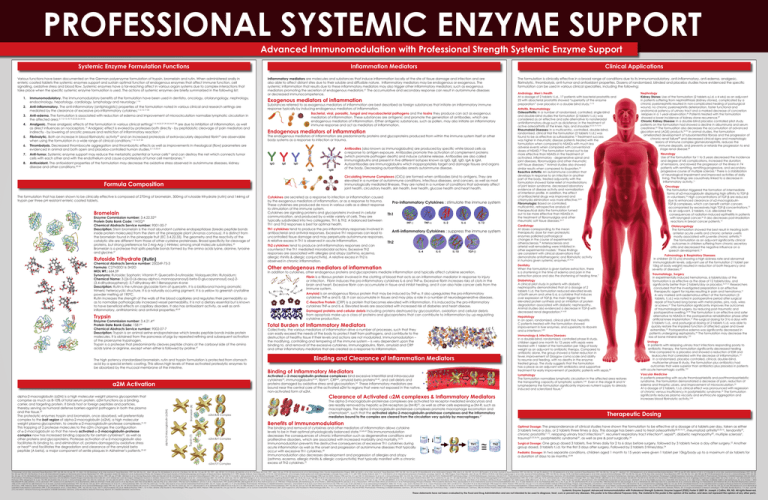
Professional Systemic Enzyme Support
Advanced Immunomodulation with Professional Strength Systemic Enzyme Support
Systemic Enzyme Formulation Functions
Inflammation Mediators
Various functions have been documented on the German polyenzyme formulation of trypsin, bromelain and rutin. When administered orally in
enteric coated tablets the systemic enzymes support and sustain optimal function of endogenous enzymes that affect immune function, cell
signalling, oxidative stress and blood flow. Systemic enzymes have a far-reaching affect in various organ systems due to complex interactions that
take place when the specific systemic enzyme formulation is used. The actions of systemic enzymes are briefly summarized in the following list:
1.Immunomodulatory. The immunomodulatory benefits of the formulation have been used in dentistry, oncology, otolaryngology, nephrology,
endocrinology, hepatology, cardiology, lymphology and neurology.1-16
2. Anti-inflammatory. The anti-inflammatory (antiphlogistic) properties of the formulation noted in various clinical and research settings are
mediated by the clearance of excessive pro-inflammatory cytokines.7,12,15,17-33
3.Anti-edema. The formulation is associated with reduction of edema and improvement of microcirculation normalize lymphatic circulation in
the affected area.5,7,12-15,18,19,22,25,26,34-36
4.Analgesic. These analgesic effects of the formulation in various clinical settings7,15,18,22,27,29,33,34,37,38 are due to inhibition of inflammation, as well
as direct influences on nociceptors.19 Analgesic effect is evoked by proteases both directly - by peptidolytic cleavage of pain mediators and
indirectly - by lowering of oncotic pressure and restriction of inflammatory reaction.5
5.Fibrinolytic. Both an increase in blood fibrinolytic activity39 and an increased proteolysis of extravascularly deposited fibrin23 are observable
when using the formulation in a wide range of clinical conditions.7,12-14,37,40
6.Thrombolysis. Decreased thrombocyte aggregation and thrombolytic effects as well as improvements in rheological (flow) parameters are
evidenced in animal and both open and placebo-controlled human studies.5,7,15,35,41
7.Anti-tumor. Systemic enzyme support may reduce the metastatic potential or tumor cells15 and can destroy the net which connects tumor
cells with each other and with the endothelium and cause a proteolysis of tumor cell membranes.12
8.Antioxidant. The antioxidant properties of the formulation may decrease the oxidative stress observed in autoimmune diseases, kidney
disease and other conditions.42-44
Inflammatory mediators are molecules and substances that induce inflammation locally at the site of tissue damage and infection and are
also able to affect distant sites due to their soluble and diffusible nature. Inflammatory mediators may be endogenous or exogenous. The
systemic inflammation that results due to these inflammatory mediators may also trigger other inflammatory mediators; such as exogenous
mediators promoting the secretion of endogenous mediators.61 The accumulative and secondary response can result in autoimmune diseases
or decreased immunocompetence.
Exogenous mediators of inflammation
Substances referred to as exogenous mediators of inflammation are best described as foreign substances that initiate an inflammatory immune
response typically by inducing endogenous mediators of inflammation.
Bacterial, viral, parasitic, fungal and mycobacterial pathogens and the toxins they produce can act as exogenous
mediators of inflammation. These substances are antigenic and promote the generation of antibodies, which are
endogenous mediators of inflammation. Other antigenic substances, such as pollen, may also initiate an inflammatory
immune response and act as mediators of inflammation.
Endogenous mediators of inflammation
The endogenous mediators of inflammation are predominantly proteins and glycoproteins produced from within the immune system itself or other
body systems as a response to infection or trauma.
IgG
IgE
IgD
IgA
IgM
Antibodies (also known as immunoglobulins) are produced by specific white blood cells as
a response to antigen exposure. Antibodies promote the activation of complement proteins
(which promote pathogen death) and induce cytokine release. Antibodies are also called
immunoglobulins and present in five different isotypes known as IgG, IgE, IgD, IgA & IgM.
Autoantibodies are immunoglobulins which inappropriately target and damage tissues and organs
of the body. Decreasing autoantibodies arrests autoimmune disease.
Circulating Immune Complexes (CICs) are formed when antibodies bind to antigens. They are
elevated in a number of autoimmune conditions, infectious diseases, and cancers, as well as most
immunologically mediated illnesses. They are noted in a number of conditions that adversely affect
joint health, circulatory health, skin health, liver health, glucose health and heart health.
Formula Composition
The formulation that has been shown to be clinically effective is composed of 270mg of bromelain, 300mg of rutoside trihydrate (rutin) and 144mg of
trypsin per three pH resistant enteric coated tablets.
Bromelain
Enzyme Commission number: 3.4.22.3245
Protein Data Bank Code: 1W0Q46
Chemical Abstracts Service number: 9001-00-7
Description: Stem bromelain is the most abundant cysteine endopeptidase (breaks peptide bonds
inside protein molecules) from the stem of the pineapple plant (Ananas comosus). It is distinct from
the bromelain found in the pineapple fruit (EC 3.4.22.33). The geometry and the reactivity of the
catalytic site are different from those of other cysteine proteinases. Broad specificity for cleavage of
proteins, but strong preference for Z-Arg-Arg-|-NHMec among small molecule substrates.45
Bromelain is a protease that splits peptide bonds formed by the amino acids lysine, alanine, tyrosine
and glycine.47
Rutoside Trihydrate (Rutin)
Chemical Abstracts Service number: 250249-75-3
Formula: C27H30O16·3H2O
MOL WT.: 664.59
Synonyms: Rutoside; Sophorin; Vitamin P; Quercetin-3-rutinoside; Violaquercitrin; Rutosidum;
Chemical Name: 3-[[6-O-(6-deoxy-alpha-L-mannopyranosyl)-beta-D-glucopyranosyl] oxy]-2(3,4-dihydroxyphenyl)- 5,7-dihydroxy-4H-1-Benzopyran-4-one
Description: Rutin is the rutinose glycoside form of quercetin. It is a bioflavonol having aromatic
trimeric heterocyclic structure. It is a naturally occurring pigment. It is a yellow to greenish crystalline
powder melting at 190ºC.
Rutin increases the strength of the walls of the blood capillaries and regulates their permeability so
as to normalize pathologically increased vessel permeability. It is not a dietary essential but is known
to have beneficial effects on capillary disorders. It also has antioxidant activity, as well as antiinflammatory, antihistaminic and antiviral properties.48,49
Trypsin
Enzyme Commission number: 3.4.21.445
Protein Date Bank Code: 1S8146
Chemical Abstracts Service number: 9002-07-7
Description: Trypsin is an animal serine endoproteinase which breaks peptide bonds inside protein
molecules. It is obtained from the pancreas of pigs by repeated refining and subsequent activation
of the proenzyme trypsinogen.
Trypsin is a protease that predominantly cleaves peptide chains at the carboxyl side of the amino
acids lysine or arginine, except when either is followed by proline.47
The high potency standardized bromelain, rutin and trypsin formulation is protected from stomach
acid by a special enteric coating. This allows high levels of these activated proteolytic enzymes to
be absorbed by the mucosal membrane of the intestine.
Cytokines are secreted as a response to infection or inflammation caused
by the exogenous mediators of inflammation, or as a response to trauma.
These cytokines are produced de novo in various cells as a direct response
to stimulation of the immune system.
Cytokines are signaling proteins and glycoproteins involved in cellular
communication, and produced by a wide variety of cells. They are
typically subdivided into two categories, Th1 & Th2. A balanced between
Th1 and Th2 responses is best for optimal health.
Th1 cytokines tend to produce the pro-inflammatory responses involved in
antibacterial and antiviral responses. Excessive Th1 responses can lead to
uncontrolled tissue damage and may perpetuate autoimmune responses.
A relative excess in Th1 is observed in acute inflammation.
Th2 cytokines tend to produce anti-inflammatory responses and can
counteract the Th1 mediated microbicidal actions. Excessive Th2
responses are associated with allergies and atopy (asthma, eczema,
allergic rhinitis & allergic conjunctivitis). A relative excess in Th2 is
observed in chronic inflammation.
Pro-inflammatory Cytokines : stimulate the immune system
Th1
INF-γ
IL-2
TNF-a
IL-6
IL-12
Anti-inflammatory Cytokines : suppress the immune system
Th2
IL-4
IL-5
IL-10
TGF-b
Other endogenous mediators of inflammation
In addition to cytokines, other endogenous proteins and glycoproteins mediate inflammation and typically affect cytokine secretion.
Fibrin is a fibrous protein involved in the clotting of blood that acts as an inflammation mediator in response to injury
or infection. Fibrin induces the pro-inflammatory cytokines IL-6 and TNF-α. Excessive fibrin increases risks of clots in the
brain and heart. Excessive fibrin can accumulate in tissue and inhibit healing, and it can also hide cancer cells from the
immune system.
Amyloid is an endogenous fibrous protein that may be induced by TNF-α. It also upregulates the pro-inflammatory
cytokines TNF-α and IL-1β. It can accumulate in tissues and may play a role in a number of neurodegenerative diseases.
C-Reactive Protein (CRP) is a protein that becomes elevated with inflammation. It is induced by the pro-inflammatory
cytokines TNF-α and IL-6. Elevated levels are associated with increased risk of diabetes and heart disease.
Damaged proteins and cellular debris including proteins destroyed by glycosylation, oxidation and cellular debris
from apoptosis make up a class of proteins and glycoproteins that can contribute to inflammation by up-regulating
cytokine production.
Total Burden of Inflammatory Mediators
Collectively, the various mediators of inflammation drive a number of processes, such that they
can easily exceed the needs of the body to protect itself from pathogens, and contribute to the
destruction of healthy tissue if their levels and actions are not modulated. Immunomodulation –
the modifying, controlling and tempering of the immune system – is very dependent upon the
binding to, and removal of the excessive cytokines, immunoglobulins, fibrin, amyloid and CRP
and other inflammatory mediators that are created as a response to inflammation.
Binding and Clearance of Inflammation Mediators
Binding of Inflammatory Mediators
Activated α-2-macroglobulin-protease complexes bind excessive interstitial and intravascular
cytokines53, immunoglobulins62,63, fibrin64, CRP65, amyloid beta proteins55-60, and cell debris and
proteins damaged by oxidative stress and glycosylation.54 These inflammatory mediators are
bound near the central core of the activated α2M to regions that were not exposed in the native,
non-activated form of α2M.
a2M Activation
The formulation is clinically effective in a broad range of conditions due to its immunomodulatory, anti-inflammatory, anti-edema, analgesic,
fibrinolytic, thrombolysis, anti-tumor and antioxidant properties. Dozens of randomized, blinded and placebo studies have evidenced the specific
formulation can be used in various clinical specialties, including the following:
Andrology, Men’s Health
At a dosage of 2 tablets t.i.d., 17 patients with bacterial prostatitis and
23 with abacterial prostatitis showed “superiority of the enzyme
preparation” over placebo in a double blind study.71,72
Arthritis, Rheumatology Osteoarthritis: In a number of randomized, controlled, single-blind
and double-blind studies the formulation (2 tablets t.i.d.) was
considered as an effective and safe alternative to nonsteroidal
antiinflammatory drugs such as diclofenac in the treatment of
active osteoarthritis of the knee, hips, and shoulder.20,32,73-75,92
Rheumatoid Diseases: In a multicentric, controlled, double-blind,
randomised, clinical trial the formulation (2 tablets t.i.d.) was
found to be as effective as sulfasalazine.76 Treatment success
was higher in rheumatic disease patients treated with the
formulation when compared to NSAIDs with much less
adverse events when compared with conventional
doses of NSAID.33 The formulation turned out to be
more effective than NSAIDs in the treatment of
activated, inflammatory - degenerative spinal and
joint diseases, fibromyalgias and other rheumatic
soft tissue diseases.77 Animal studies also showed
similar results when compared to ibuprofen.93 Reactive Arthritis: An autoimmune condition that
develops in response to an infection in another
part of the body, treated adjuvantly with the
formulation showed faster relief of manifestations
of joint lesion syndrome, decreased laboratory
evidence of disease activity and normalization
of interferon profile. In addition, the effect
of antibacterial drugs was improved and
chlamydia elimination was more effective.24,91
Fibromylagia: Based on controlled,
multicentric, retrospective analysis of
therapeutical data the formulation turned
out to be more effective than NSAIDs in
the treatment of fibromyalgias and other
rheumatic soft tissue diseases.33,77
Cardiology
At doses corresponding to the mean
therapeutic dose for men proteolytic
enzymes palliated pathological
changes in the course of experimental
atherosclerosis.78 Arteriosclerosis and
arterial wall remodeling were inhibited in
other experimental models.1 These findings
are consistent with clinical observations that
demonstrate antiatherogenic and fibrinolytic activity
in humans given systemic enzymes.69,79-81
Bromelain (B)
Trypsin (T)
a2M/B/B Complex
Benefits of Immunomodulation
a2M/B/T Complex
a2M/T/T Complex
The binding and removal of cytokines and other mediators of inflammation allows cytokine
levels to be in their optimal physiologically balanced state.53,68,69 This immunomodulation
decreases the consequences of chronic inflammation such as degenerative conditions and
proliferative disorders, which are associated with increased morbidity and mortality.53,70
Immunomodulation prevents the destructive consequences of excessive Th1 cytokines during
acute inflammation as well as the onset and progression of autoimmune diseases that typically
occur with excessive Th1 cytokines.68
Immunomodulation also decreases development and progression of allergies and atopy
(asthma, eczema, allergic rhinitis & allergic conjunctivitis) that typically manifest with a chronic
excess of Th2 cytokines.70
Neurology
Use of the formulation for 1 to 3 years decreased the incidence
and degree of MS complications, increased the duration
of remissions, and slowed the progression of the illness in 74
patients with remitting, remitting-progressive, and secondary
progressive course of multiple sclerosis.6 There is a stabilization
of neurological impairment and improved activities of daily
living. The findings are causatively linked to a decrease in
inflammatory activity.11
Oncology
The formulation triggered the formation of intermediate
forms of a2-macroglobulin displaying high affinity to TGF-b
in volunteers.94 High concentrations of TGF-b are reduced
due to enhanced clearance of a2-macroglobulinTGF-b complexes, which can benefit certain cancers
accompanied by excessively high TGF-b concentrations.70
As an adjuvant, 2 tablets, t.i.d. alleviated the
consequences of radiation-induced epitheliitis in patients
with laryngeal cancer.36 It also decreases post-irradiation
reactions in breast cancer patients.12
Pulmonology & Respiratory Diseases
In children (3-15 y/o) showing a high sickness rate and abnormal
immunoglobulin levels, adjuvant use of the formulation (1 tablet per
10kg of body weight) resulted in reduction of both frequency and
severity of diseases.63
Diabetology
A clinical pilot study in patients with diabetic
nephropathy demonstrated that at a dosage of 2
tablets t.i.d. the formulation reduced elevated levels
of both serum and urine IL-6, a cytokine that induces
over expression of TGF-b, the main trigger for the
elevated protein synthesis and an inhibition of protein
degradation associated with diabetic nephropathy.
Animal studies also evidenced a decrease in TGF-b with
decreased renal degradation.8,16,82
Hepatology
In an open, randomized, clinical pilot trial, hepatitis
C patients treated with the formulation showed
improvement in liver enzymes, and superiority to ribavirin
and a-interferon.4,83 Immunology & Infectious Diseases
In a double-blind, randomized, controlled phase III study,
children aged one month to 12 years with sepsis were
treated with 1 tablet of the formulation per 10kg of body
weight as an adjuvant to antibiotic therapy. Compared to
antibiotic alone, the group showed a faster reduction in
fever, improvement of Glasgow coma scale and ability
to resume oral feeding, with no deaths in the enzyme
treated group. The study suggests that the formulation
has a place as an adjuvant with antibiotics and supportive
treatment for early improvement of pediatric patients with sepsis.84
Lymphology
The formulation normalizes lymphatic circulation in the affected area restores
the transporting capacity of lymphatic system.5,85 Even in the stage III and IV
lymphedema the formulation significantly improves nutrient supply to already
induced and sclerotized tissue.5
The alpha-2-macroglobulin-proteinase complexes are activated for receptor mediated endocytosis and
are readily removed by hepatic α-2M-receptors (α-2M-R)53, as well as other cells expressing α-2M-R, such as
macrophages. The alpha 2-macroglobulin-proteinase complexes promote macrophage locomotion and
chemotaxis66, such that the activated alpha 2-macroglobulin-proteinase complexes and the inflammatory
mediators bound to the complex are cleared from the circulation very quickly by macrophages.67
Nephrology
Kidney Stones: Use of the formulation (2 tablets q.i.d. x 4 wks) as an adjuvant
in patients suffering from nephrolithiasis (kidney stones), complicated by a
chronic pyelonephritis resulted in non-complicated healing of postsurgical
wound, no chronic pyelonephritis deterioration, faster functional and
anatomical patency of urinary tract and a marked decrease of concretion
relapses in a 1-year-observation.86 Patients treated with the formulation
showed a lower incidence of kidney stone recurrence.87
Chronic Kidney Disease: In a double-blind placebo controlled pilot study
patients on the formulation had showed a decline in albuminuria and serum
creatinine.82 The formualtion also decreases the accumulation of advanced
glycation end (AGE) products.82,90 In animal studies, the formulation
ameliorated development of tubulointerstitial fibrosis and the progression of
chronic renal failure88 and decreased clinical signs and morphologic
lesions of immune complex glomerulonephritis, reduces the
immune deposits, and prevents or retards the progression to end
stage renal disease.89
Otolaryngology
The formulation showed the best result in treating both
anterior acute uveitis and chronic anterior uveitis
mostly associated with juvenile chronic arthritis.95
The formulation as an adjuvant significantly clinical
outcomes in children suffering from chronic secretory
otitis and decreased the negative influence on a
speech development.13
Dentistry
When the formulation is given before extraction, there
is a shortening in the time of edema and pain in the
extraction place and also the shortening of healing time.7
Clearance of Activated α2M complexes & Inflammatory Mediators
alpha-2-Macroglobulin (a2M)
alpha-2-macroglobulin (a2M) is a high molecular weight plasma glycoprotein that
comprise as much as 8-10% of total serum protein. a2M functions as a binding,
carrier, and targeting protein. It binds host or foreign peptides and particles,
thereby serving as humoral defense barriers against pathogens in both the plasma
and the tissue.50
The proteolytic enzymes tryspin and bromelain, once absorbed, will preferentially
complex to the bait region of alpha-2-macroglobulin (a2M), a high molecular
weight plasma glycoprotein, to create α-2-macroglobulin-protease complexes.51,52
This trapping of 2 protease molecules to the a2m changes the configuration
of α-2-macroglobulin so that the newly activated α-2-macroglobulin-protease
complex now has increased binding capacity for certain cytokines53, as well as
other proteins and glycoproteins. Protease activation of α-2-macroglobulin also
facilitates its binding to, and elimination of, proteins damaged by oxidative stress
or heat54 and facilitates the degradation and clearance of the amyloid beta
peptide (A beta), a major component of senile plaques in Alzheimer’s patients.55-60
Clinical Applications
Traumatology, Surgery
In experimentally induced hematomas, 6 tablets/day of the
formulation is as effective as the dose of 12 tablets/day, and
significantly better than 2 tablets/day or placebo.96,97,21 Researchers
concluded that the investigated preparation is an effective
therapeutic agent for injuries resulting in pain and hematoma.21
A very marked anti-oedematous effect of the formulation (3
tablets, t.i.d.) was noted in postoperative period after surgical
repair of fractured long bones with metal plates, pins, rods, wires
or screws.37 The formulation significantly improves the outcomes
of traumatological surgery, by reducing post-traumatic and
postoperative swelling.34,98 The formulation is an effective and safer
alternative to NSAIDs in the postoperative rehabilitation phase after
artificial knee implantation.27 Pre-surgical dosing for 3 to 6 days with
5 tablets t.i.d., and postsurgical dosing at 2 tablets t.i.d. was able to
quickly restore the impaired function of affected upper and lower
extremities.22 Postoperative edema was significantly decreased in
patients undergoing septoplasty.99 The formulation may decrease the
loss of bone mineral density.100
Urology
In patients with relapsing urinary tract infections responding poorly to
antibiotic therapy, the formulation significantly decreased healing
time compared to a placebo and showed a reduction of ESR and
leukocytes that correlated with the decrease of inflammation.101
In a randomized, placebo controlled, clinical, double-blind,
multicenter phase III study, the formulation plus antibiotics had
outcomes that were superior than antibiotics plus placebo in patients
with acute hemorrhagic cystitis.102
Vascular Medicine
In patients presenting with acute thrombophlebitis and postthrombophlebitic
syndrome, the formulation demonstrated a decrease of pain, reduction of
edema and throphic ulcers, and improvement of microcirculation.35
At a dosage of 2 tablets, t.i.d. clinical effect was pronounced with regression
of chronic venous insufficiency in postphlebitic syndrome.39 The formulation
significantly reduces plasma viscosity and erythrocyte aggregation and
increases blood fibrinolytic activity.5,40
Therapeutic Dosing
Optimal Dosage: The preponderance of clinical studies have shown the formulation to be effective at a dosage of 6 tablets per day, taken as either
3 tablets twice a day, or 2 tablets three times a day. This dosage has been used to treat osteoarthritis28,30,74,75, rheumatoid arthritis23,33,76, tendonitis29,
chronic prostatitis71,72, relapsing urinary tract infections101, recurrent respiratory tract infection63, sepsis84, diabetic nephropathy82, multiple sclerosis6,
trauma22,25,26,96, postphlebitic syndrome39, as well as pre & post surgically.34
Surgical Dosage: One group dosed 3 tablets, five times daily for 2 to 6 days before surgery, followed by 3 tablets twice a day after surgery.22 Another
group dosed, 3 tablets t.i.d. for the first 3 days after surgery. Followed by 2 tablets 3 times/day.34
Pediatric Dosage: In two separate conditions, children aged 1 month to 15 years were given 1 tablet per 10kg/body up to a maximum of six tablets for
a duration of days to six months.63,84
[1] Gaciong Z, et al. Inter. Journal of Tissue Reactions 1997, Vol. XIX, No.1/2, pp. 90 - 91, Abst. 110. [2] Gaciong Z, et al. Inter Journal of Tissue Reactions 1997, Vol. XIX, No.1/2, Abst. 120, pp. 96. [3] Heidland A, et al. Int J Tiss Reac Vol. XIX, No. 1/2, pp. 89 - 90, 1997 - abs 109 SO 112 (19-04-2). [4] Kabil SM, et al. Int J Tiss Reac XIX (1/2), 1997 - abst. 122, pp. 97-98. [5] Machanova M, et al. Dermatology Clinic, Faculty Hospital Bulovka, Prague. 2000. [6] Mertin J, et al. Inter. Journal of Tissue Reactions 1997, Vol. XIX , No.1/2, pp 95. [7] Navrátilová B, et al. Miniinvazivní terapie 1998, císlo 3, str. 106-109 (16-13-1). [8] Paczek L, et al. Inter. Journal of Tissue Reactions 1997, Vol. XIX, No. 1/2, pp 93, abstract 115. [9] Sebeková K, et al. Inter. Journal of Tissue Reactions 1997, Vol. XIX, No. 1/2, pp 97 - abstract 121. [10] Sebekova K, et al. Mineral and Electrolyte Metabol. 1997: 23, pp 291-295. 344 KA (17-05-1). [11] Stauder G, et al. Inter. Journal of Immunotherapy 1997, Vol. XIII,
No. 3/4, pp 135-137. [12] Tarutinov VI, et al. 6th International Congress on Hormones and Cancer, September 5-9, 1999, Jerusalem, Israel [13] Veldová Z, et al. Audiocentrum Praha. 62. Congress of the Czech Society of Otorhinolaryngology and Surgery of Head and Neck, September 9-11, 1999, Hradec Králové, Czech Republic. (17-01-2). [14] Vyhnánková L, et al. kongres Ceské spolecnosti otorinolaryngologie a chirurgie hlavy a krku, 9.-11. zárí, 1999, Hradec Králové, abst. P 11. [15] Wald M, et al. International symposium of pediatric oncology, April 23 - 24, 1998, Prague, Czech Republic, abst. 33, pp. 50. 598 KA (19-03-3). [16] Wiest-Ladenburger U, et al. Inter. Journal of Immunotherapy 1997, Vol. XIII, No. 3/4, pp. 75-78. [16] Wiest-Ladenburger U, et al. Inter. Journal of Immunotherapy 1997, Vol. XIII, No. 3/4, pp. 75-78. Also: Inter. Journal of Tissue Reactions 1997, Vol. XIX, No. 1/2, abs 108, pp. 89. [17] Emancipator SN, et al. Int. J. Immunotherapy 1997, Vol. XIII,
No. 3/4, pp. 67-74. [18] Kerkhoffs GM, et al. Br J Sports Med. 2004 Aug;38(4):431-5. [19] Klein G, et al. Wien. Med. Wschr. 1999, 149, pp. 577-580. [20] Klein G, et al. Clin Exp Rheumatol. 2006 Jan-Feb;24(1):25-30. [21] Kleine MW, et al. Journal of Clinical Research 1998, Vol.1, pp. 87-102. PZ 12 (16-08-1). [22] Levenets VN, et al. Klinitschna khirurgia 1997, 9-10, p. 50. [23] Mazourov VI, et al. Reumatologia 1998, Sup Vol. XXXVI, Warsaw 1998, Lect No. 211, pp 108-110. [24] Mazurov VI, et al. Int. J. Immunotherapy 2001, Vol. XVII, No. 2/3/4, pp. 125-128. [25] MU-91410. PHARMASCRIPT, Kathi-Kobus-Steig 1, W-8190 Wolfratshausen, Germany. [26] MU-91411. PharmaScript, Kathi-Kobus-Steig 1, D-82515 Wolfratshausen, Germany. [27] MU-692402. Kreiskrankenhaus Auenstrasse 6 D-82467. Garmisch-Partenkirchen, Germany. [28] MU-695414. PharmaScript, Primelweg 2, D-82538 Geretsried, Germany. [29] MU-695419. PharmaScript, Primelweg 2, D-82538 Geretsried. [30] MU-696401.
PharmaScript, Primelweg 2, D-82538 Geretsried, Germany. [31] MU-696416. Hospital Aragon Avenida 506 entre Calle 521 y 519, Unidad San Juan de Aragon, Delegacion Gustavo A. Madero, Mexico D.F., C.P. 0792. [32] Singer F, et al. Int. J. Immunotherapy 2001, Vol. XVII, No. 2/3/4, pp. 135-141. [33] Wittenborga A, et al. Arzneimittel-Forschung/Drug Research 2000, Vol. 50 (II), No. 8, pp. 728-738. PZ 20 (3-14-2) [34] Kamenícek V, et al. Acta Chir Orthop Traumatol Cech. 2001;68(1):45-49. [35] Kopadze, TS, et al. Georgian Medical News 2001, No. 2, (serial No.71), pp. 27 – 29. [36] Pluzhnikov MS, et al. Folia Otorhinolaryngologiae et Pathologiae Respiratoriae 1999, Vol. 5, No.1-2/99, pp. 73-75. [37] Kamenícek, V, et al. Rozhledy v Chirurgii 1999, Jun; 78(6): 279-281. [38] Klein G, et al, Meta-analysis. MU-696 401, MU-695 414 & MU-696 416. December 2, 1998 [39] Koshkin VM, et al. Angiology and vascular surgery 2000, Vol. 6, No. 2, pp. 61 – 64. [40] Saradeth T, et al.
Perfusion 1995: Jahrgang 8, Nr. 6, pp. 196-198. [41] Koshkin VM, et al. Int. J. Immunotherapy 2001, Vol. XVII, No. 2/3/4, pp. 121-124. [42] MU-697411. Clinic of Pharmcotherapy, Institute of Preventive and Clinical Medicine Bratislava, Slovakia. Medizinische Klini, University of Wuerzburg, Wuerzburg, Germany. [43] Šebeková K, et al. Research in Experimental Medicine 1999, Vol. 199, No. 3, Dec 1999, pp. 177-188. [44] Targoni OS, et al. Journal of Autoimmunity 1999, Vol. 12, pp. 191-198. [45] BRENDA, et al. http://www.brenda-enzymes.org. [46] RCSB Protein Data Bank. http://www.rcsb.org. [47] Wald, et al. NutriNews. 600 Boyce Road • Pittsburgh, PA 15205 August, 2008. [48] Couch, JF, et al. J. Am. Chem. Soc., 1952, 74 (2), pp 424–425. [49] PubChem. CID 16218542 http://pubchem.ncbi.nlm.nih.gov. [50] Borth, W, et al. The FASEB Journal, Vol 6, 3345-3353. [51] Gonias SL, et al. J Biol Chem. 1983 Dec 10;258(23):14682-5. [52] Mettenburg JM, et al. Protein J. 2005
Feb;24(2):89-93. [53] LaMarre J, et al. Lab Invest. 1991 Jul;65(1):3-14. [54] French K, et al. Biochemistry. 2008 Jan 29;47(4):1176-85. [55] Lauer D, et al. Exp Neurol. 2001 Feb;167(2):385-92. [56] Qiu WQ, et al. J Biol Chem. 1996 Apr 5;271(14):8443-51. [57] Du Y, et al. J Neurochem. 1997 Jul;69(1):299-305. [58] Hughes SR, et al. Proc Natl Acad Sci U S A. 1998 Mar 17;95(6):3275-80. [59] Mettenburg JM, et al. Protein J. 2005 Feb;24(2):89-93. [60] Qiu Z, et al. J Neurochem. 1999 Oct;73(4):1393-8. [61] Stvrtinova V, et al. Pathophysiology Principls of Disease. 1995 Academic Electronic Press. [62] Sizyakina LP, et al. International Journal on Immunorehabilitation 2001, 3, 2, 75. [63] Vokálová I, et al. Vox Pediatriae 2003, Vol. 2., No. 9, pp. 29 – 30. [64] Rowland FN, et al. Curr Eye Res. 1985 May;4(5):537-53. [65] Zaciragic A, et al. J Alzheimers Dis. 2007 Sep;12(2):151-6. [66] Misra UK, et al. J Immunol. 2005 Aug 15;175(4):2525-33. [67] Feldman SR, et al. Biochem Biophys Res Commun.
1983 Jul 29;114(2):757-62. [68] Mazourov VI, et al. Inter. Journal of Immunotherapy 1997, Vol. XIII, No. 3/4, pp. 85-91. [69] Mazurov VI, et al. Int. J. Immunotherapy 2001, Vol. XVII, No. 2/3/4, pp. 113-120. [70] Lauer D, et al. Cancer Chemother Pharmacol 2001, Vol. 47., Suppl. July 2001, 4 – 9. [71] MU-694422. PharmaScript, Primelweg 2, D-82538 Geretsried, Germany. [72] Schlüter P, et al. Euro Journ Infect and Immuno Dis 1998, Vol. 2, pp. 57-69 [73] Klein G, et al. Clinical Drug Investigation, 2000, Vol. 19, No. 1, pp. 15-23. [74] Tilwe GH, et al. J Assoc Physicians India. 2001 Jun;49:617-21. [75] Kullich W, et al. Reumatologia 1998, Suppl Vol. XXXVI, Warsaw 1998, Lect No. 213, pp 111-114. [76] MU-693405. Institute of Rheumatology, Prague, Czech Republic. [77] Hanisch J. IFAG Basel, November 1995 [78] Dosenko VE, et al. Experimental cardiology 2000, No. 5-6, pp. 87-94. [79] Sledzevskaya IK, et al. II Mediterranean Congress of Physical Medicine and Rehabilitation,
20-23 May, 1998, Valencia, Spain. Abstracts- pp. 137 489 KA (19-08-3). [80] Sledzevskaja UK, et al. Zurnal praktièeskogo vraèa 1997, No. 3, pp. 43 – 44. [81] Kovalenko VN, et al. Int. J. Immunotherapy 2001, Vol. XVII, No. 2/3/4, pp. 101-111. [82] Stauder G, et al. Editoriale Bios 2000 PZ 22 (5-14-3)-(19-11-3). [83] Stauder G, et al. Inter. Journal of Immunotherapy 1997, Vol. XIII, No. 3/4, pp 153-158. [84] Shahid SK, et al. J Assoc Physicians India (JAPI) 2002, Vol. 50, pp. 527-531. [85] Wald M, et al. Przeglad lekarski 2000, Vol. 57 Suppl.5/2000, pøednáška 56, pp. 116. [86] Borisov AV, et al. 1st National Congress of the Ukraine on Immunology, Allergology, and Immunorehabilitation. Odessa State Medical University. [87] Borisov OV, et al. Urologia 1998, 3, pp. 29-35. [88] Sebekova K, et al. Nieren- und Hochdruckkrankheiten 1997, Jahr. 26, No. 6/1997, 277-281. [89] Emancipator SN, et al. Int J. Immunotherapy 1997, Vol. XIII, No. 3/4, pp. 97-103. [90] Sebekova K, et al. Biomedical
subedition Folia Medica Cassoviensia 1999, 5. [91] Rovenská E, et al. J. Tissue React. 1999, Vol. XXI, No. 4, pp. 105-111.[92] Kovalenko VN, et al. Medical Practice 1998: 1, 12-14. Kiev, Ukraine. [93] Stauder G. Reumatologia 1998, Suppl Vol. XXXVI, Warsaw 1998, Lectures No. 210, pp 106-107. [94] Desser L, et al. Cancer Chemother Pharmacol. 2001 Jul;47 Suppl:S10-5. [95] Porubská M. Rheumatologia 2000, Roc. 14, c. 2, str. 65-69. (3-14-1). [96] MU-697403. PharmaScript, Primelweg 2 D-82538 Geretsried, Germany. [97] MU-91416. PharmaScript, Kathi-Kobus-Steig 1, D-82515 Wolfratshausen, Germany. [98] MU-692423. Pharma Script, Kathi-Kobus-Steig 1, D-82515 Wolfratshausen, Germany. [99] Lukáš, J, et al. Choroby hlavy a krku (Head and Neck Diseases), 2000, 1/2000, str. 7-9. (17-00-3) [100] Švík K, et al. The Research Institute of Rheumatic Diseases, Piešany, SR. 3. Kongres slovenských a èeských osteológov + IOF 2000, Banská Bystrica, 7.-9. sept., post 48.
[101] MU-692411. Klinische Forschung, Kirchplatz 8, D-82538 Geretsried, Germany. [102] MU-695416. Klinische Forschung, Alpenstr. 29. D-82538 Geretsried, Deutschland.
Systemic Enzyme Support: Advanced Immunomodulation with Professional Strength Systemic Enzyme Support (PSES) Poster © 2009 Dr. Joseph J Collins, RN, ND. All rights Reserved.
These statements have not been evaluated by the Food and Drug Administration and are not intended to be used to diagnose, treat, cure or prevent any diseases. This poster is for Educational Purposes Only. The material in this poster is the opinion of the author, and does not represent the opinion of any other party.

